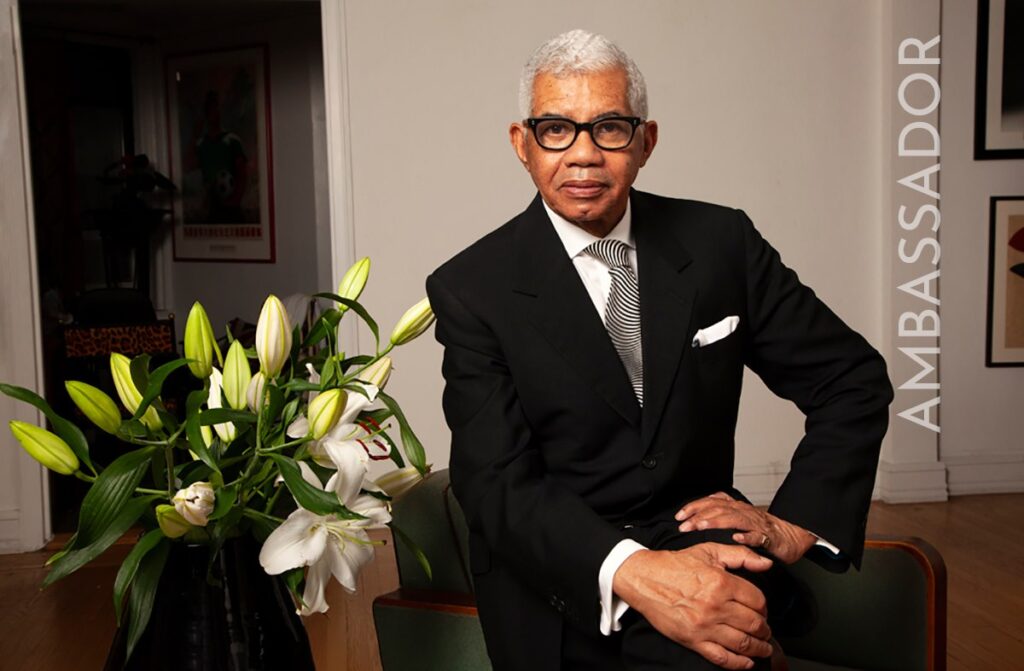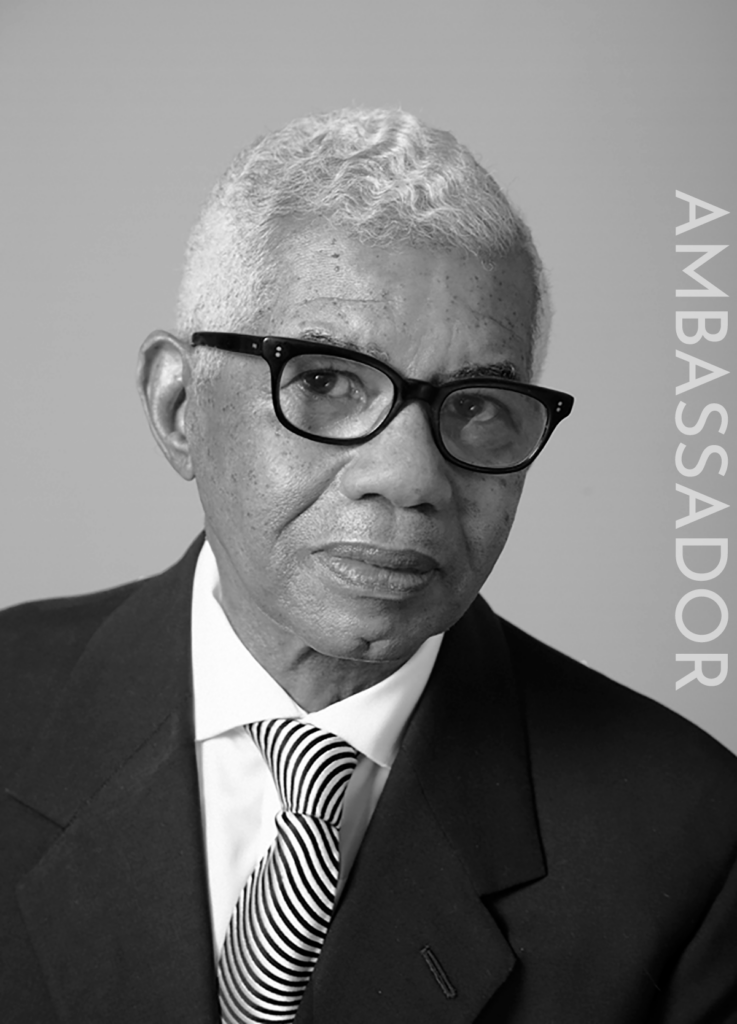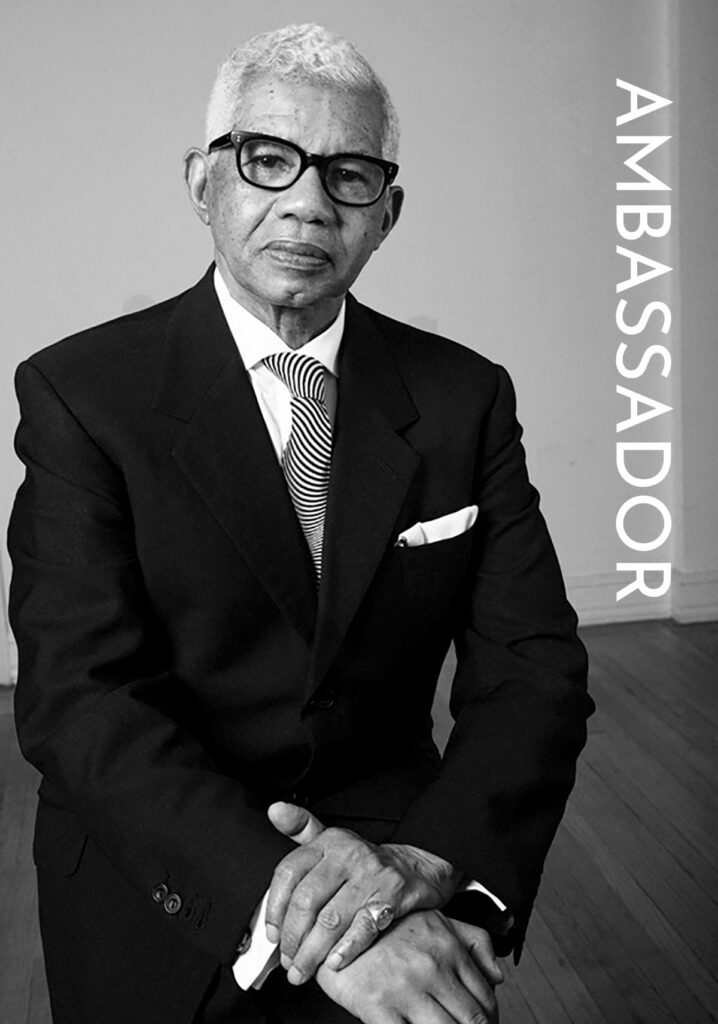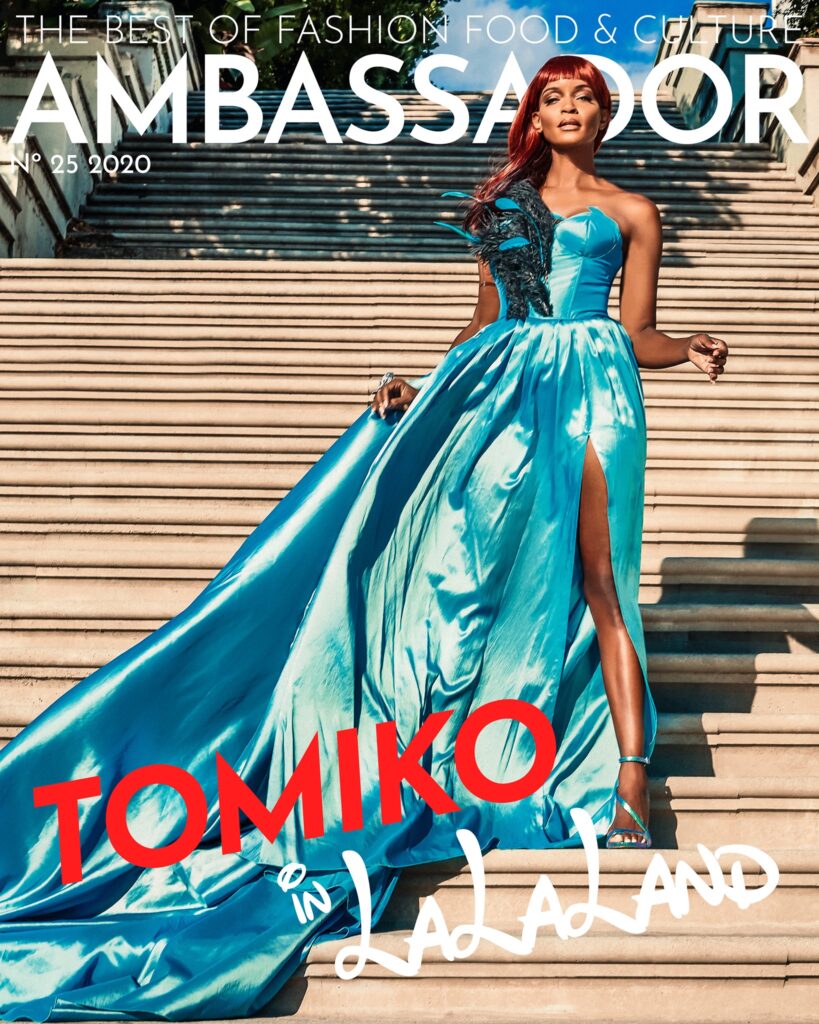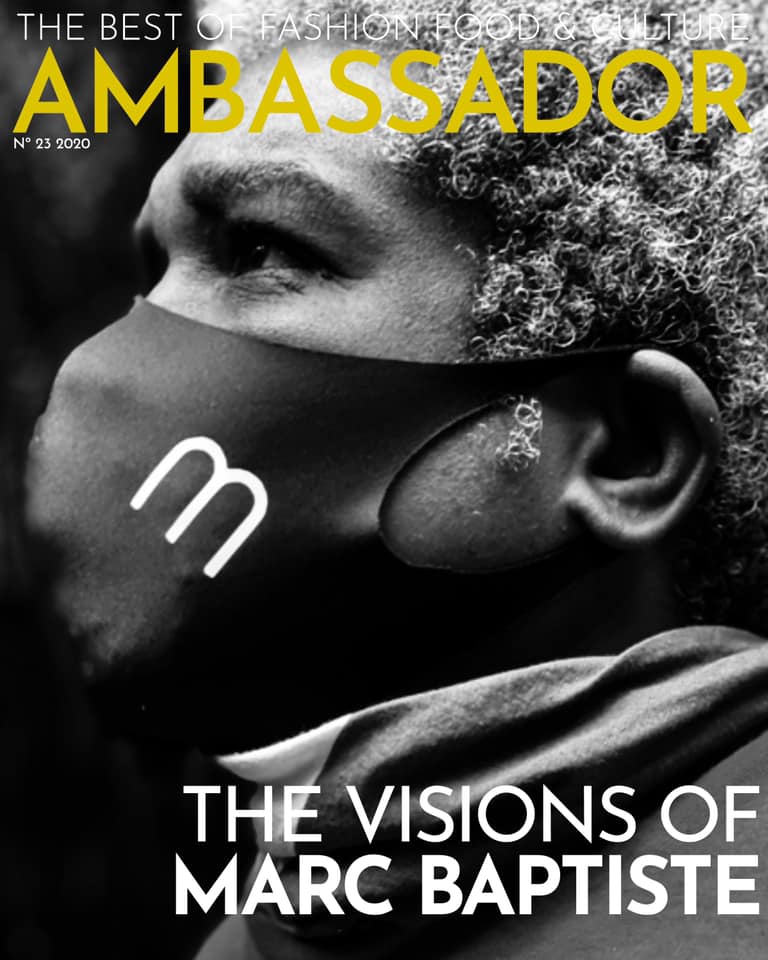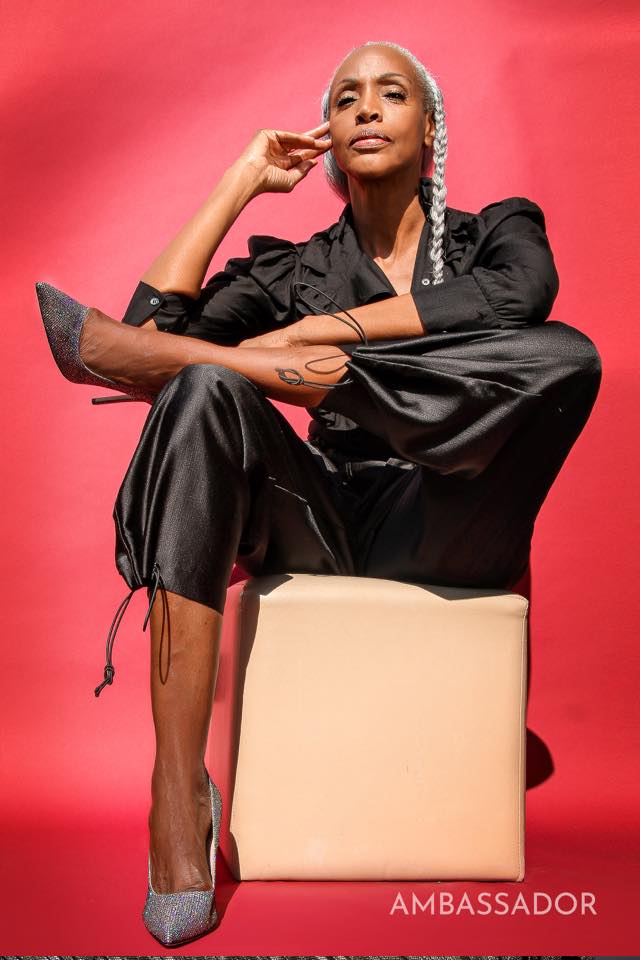I met the icon that is Freddie Leiba by chance almost 30 years ago. In 1991, I was introduced to Freddie by our friend supermodel Naomi Campbell at her 21st Birthday at Laura Belles on 43rd Street. She sat me between Freddie and Andre Leon Talley, Madonna was in the next booth with her Vogue dancers which was the rage at the time. Freddie was enigmatic a lot like myself. He gave me his card, he was the first Creative Director for the new Allure magazine. As a top Black male model in those days every door opened and you met almost every celebrity alive. So how did I after eight years at top of the fashion chain not know about this most extraordinary distinguished dapper gentleman. I certainly knew his work. His career literally parallels modern fashion and pop culture. Born to a single mother of Indian and African descent and Chinese father who he didn’t know on the Caribbean island of Trinidad. His strong willed beautiful mother did things differently. Where most parents at Christmas showered their children with toys, she gave her son a library card. But it was at the library, he ventured into the magazine section. For the first time he saw the most glamorous images on the pages of Vogue and Harpers Bazaar. On one of their Sunday strolls with his mother walking around perimeter of “the Savanna”, a huge open park he saw the beautiful red headed legendary actress Rita Hayworth coming out of a hotel while filming “Affair In Trinidad”. It was then he knew he had to leave his birthplace. That there was more to life than his small island. He got his chance when his mother who was working in New York sent for him. As a teenager, at his mothers insistence he quickly learned the value of hard work by getting up at the crack of dawn to leave their Queens apartment to travel to the city to work at Horn & Hardart, a food service automat as a dish washer. It was there he also realized that was not a life for him. So he enrolled at the newly opened Fashion Institute of Technology (F.I. T. ) as a fashion design student. At school he would befriend future legends designer Stephen Burrows and the late great illustrator Antonio Lopez. Although his design talent was being recognized by faculty and even won a design competition he did poorly academically. But this was the ‘60s as the Civil Rights movement and Vietnam War were in full throttle he only longed for excitement and fun. So he went uptown to Harlem to the Apollo to catch the Motown Revue featuring The Supremes make their debut and marvel at the Beatles who had recently washed up on American shores. Now living in the West village, at a cafe off Horatio street a chance encounter he met an older man, a UK diplomat smitten with Freddie’s youth and exotic good looks. He would change the course of his life when he took Freddie to London with his mother’s permission. Once in London, his life and world view quickly expanded as they lived across from Buckingham Palace. His boyfriend turned out to be the attaché to the Queen. He’d meet Princess Anne and other royals, dine with celebrities like Elizabeth Taylor and Richard Burton.
At only 18 years old would form life long friendships with creatives like Robert Forest, award winning hairstylist Kerry Warn, fashion designer Paul SmIth. He also got to work at the legendary Browns, a fabulous designer boutique, the predecessor to Barney’s where he met the late great Joan Burstein. She was responsible for shepherding the careers of master designers Giorgio Armani, John Galliano and Karl Largerfeld. He was in the epicenter of fashion and culture and running the cobble stone streets with punk fashion creators Malcolm Mcclarin and Vivienne Westwood. But his fun wild London days was interrupted when he let his visa lapse. As a consequence he was briefly put in jail before ultimately being deported back to the U.S. Being back in the states with no job at first seemed like a bad situation would actually be the catalyst that would alter his destiny. His friend art director Marc Balet asked Freddie to help style a photo shoot for a magazine he was involved with. That magazine happened to be Interview with Andy Warhol. He would know and work with arguably the most iconic and enigmatic pop culture artist of the 20th century. At the same time he would meet his lover Graham and moved in with him at the Alden, a grand building on Central Park West across the street from the Museum of Natural History. A beautiful penthouse apartment with a magnificent terrace overlooking all of Central Park. In the fast and free decadent ‘70s Freddie styled fierce celebrity covers by day and went partying at the most exclusive important club in the stratosphere Studio 54 by night. On those care free nights of abandon, he’d dress all the models of the era like Iman, Pat Cleaveland, Andie Macdowell, Janice Dickinson at his place before meeting Steve Rubell at 54. Private after parties at his home were legendary where he began to entertain the likes of David Bowie, Mick Jagger and Jack Nicholson. Anna Wintour, then Editor in Chief of New York magazine was doing a fashion story and practically coined the term “stylist” on Freddie by describing him for her lead story. As an in demand freelancer working for Harper’s Bazaar, he did a cover shoot using Ralph Lauren. Ralph loved the photo so much he said, “Who ever did that photo should be hired.” Bazaar listened and gave him the coveted job as creative director. This was the glorious ‘80s where he would help usher in the age of the one name supermodel Cindy, Naomi, Linda, Christy. He was also able to champion using the first black model the exquisite Karen Alexander for the cover. All the while working with some of the greatest photographers in the world, Horst, Irving Penn, Albert Watson, Rico Pullman, Ruven Afanador, Scavullo. As the hot creative he would work for major luxury brand DeBeers, Tiffany’s, L’Oreal, major designers Ralph Lauren, Calvin Klein, Donna Karan, Armani, major magazines Vogue, Bazaar, GQ, Rolling Stones, Vanity Fair traveling around the globe and living a life most of us could only dream of. But the ‘80s into ‘90s was not without tragedy as the world, especially the arts would be devastated by its most dangerous enemy, AIDS. As an openly gay man he would see many of his colleagues perish oftentimes with little to no support. After taking care of his dear friend Anthony Clevay, famed hair stylist to Sophia Loren. It was his death that would be the turning point. He was able to turn despair into activism when at a dinner for the DIFFA (Design Industries Fighting AIDS) that by shear accident he placed a red ribbon on a plate. That image became an iconic plate and mug used to raise awareness, grant funds to groups that provide treatment, direct care, preventive education and advocacy for those impacted by HIV/ AIDS. During this time his old friend the former owner of Studio 54, Ian Schrager who was suffering the lost his business partner Steve Rubell as well called on him to help design the uniforms for the Morgan Hotel in 1984. This would be the birth of the boutique hotels, it would be followed with the Royalton, the Paramount, and a business relationship that would continue to thrive thirty five years later. He would go onto be the creative director for InStyle magazine for 15 years styling almost every major celebrity in the universe Janet Jackson, Elizabeth Hurley, Meryl Streep, Bette Midler, Diana Ross, Sade, Halle Berry, Denzel Washington, Uma Thurman, Sandra Bullock, Queen Latifah, Hugh Grant, Amy Fine Collins, Joan Collins, Sarah Jessica Parker, Renee Fleming and Beyonce to name a few. At Essence, the leading Black women’s magazine he knew with his reach and ofttimes being one of the only POC in the room he decided to a feature to recognize the epic contributions of Black designers like Stephen Burrows, Byron Lars, B. Michael, Edward Wilkerson, Tracey Reese and highlight major black photographers like Marc Baptiste. But Freddie would be the first to say, “I never did any of this to be famous or work with celebrities. I was only there to do my job. I was blessed to give my mother a home before she died and one for myself.” Of all the celebrated people he has known he credits her without question as being his guiding force and the most important person in his life. A life she was proud of. Today he is in the process of writing his anticipated memoir capsulizing an unimaginable absolutely magical career that spans over six decades chronicling modern fashion and pop culture history. Freddie would also say, “More importantly than being well known is having a life well lived.” Freddie, my dear friend, I couldn’t agree more. -Musa Jackson FREDDIE LEIBA: MASTER OF STYLE: @freddie_leibaCover Photo & Editorial: @marcbaptiste007Founder & Editor:Musa Jackson@iammusajacksonCreative Director Paul Morejón @paulmorejonLIVE YOUR LIFE WITH PASSION! LIVE YOUR LIFE WITH PURPOSE! YouTube: Ambassador Digital Magazine Facebook: Ambassador Digital Magazine.Follow us on @ambassador_magInquire about brand partnerships & sponsorship opportunities.


